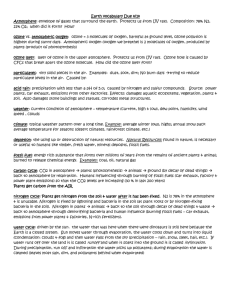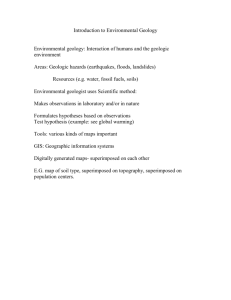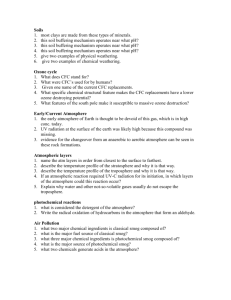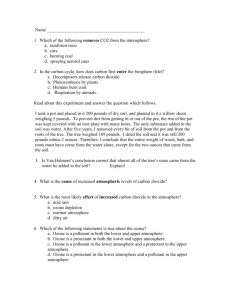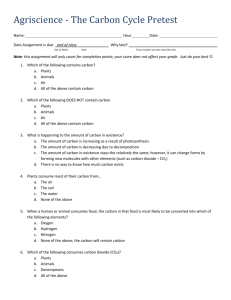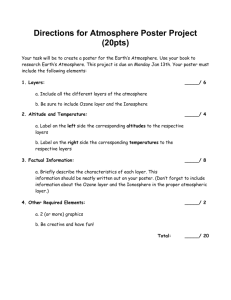C. Properties of Earth Materials
advertisement
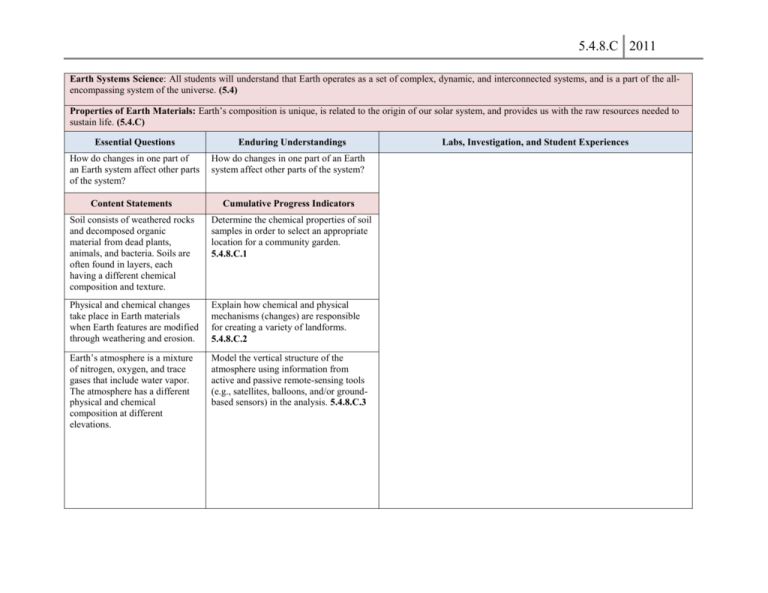
5.4.8.C 2011 Earth Systems Science: All students will understand that Earth operates as a set of complex, dynamic, and interconnected systems, and is a part of the allencompassing system of the universe. (5.4) Properties of Earth Materials: Earth’s composition is unique, is related to the origin of our solar system, and provides us with the raw resources needed to sustain life. (5.4.C) Essential Questions How do changes in one part of an Earth system affect other parts of the system? Enduring Understandings How do changes in one part of an Earth system affect other parts of the system? Content Statements Cumulative Progress Indicators Soil consists of weathered rocks and decomposed organic material from dead plants, animals, and bacteria. Soils are often found in layers, each having a different chemical composition and texture. Determine the chemical properties of soil samples in order to select an appropriate location for a community garden. 5.4.8.C.1 Physical and chemical changes take place in Earth materials when Earth features are modified through weathering and erosion. Explain how chemical and physical mechanisms (changes) are responsible for creating a variety of landforms. 5.4.8.C.2 Earth’s atmosphere is a mixture of nitrogen, oxygen, and trace gases that include water vapor. The atmosphere has a different physical and chemical composition at different elevations. Model the vertical structure of the atmosphere using information from active and passive remote-sensing tools (e.g., satellites, balloons, and/or groundbased sensors) in the analysis. 5.4.8.C.3 Labs, Investigation, and Student Experiences 5.4.8.C 2011 Desired Results 1. Compare and contrast large scale commercial farming practices with those implemented by organic farmers. 2. On steep slopes along the sides of new roads, highway department workers often grow plants to prevent soil from being eroded. Describe two ways that these plants keep the soil from eroding. 3. All of the following are examples of erosion EXCEPT: A. The wind in the desert blows sand against a rock. B. A glacier picks up boulders as it moves. C. A flood washes over a riverbank, and the water carries small soil particles downstream. D. An icy winter causes the pavement in a road to crack. (NAEP) The picture below can be used to show how sandstone can form along the edge of a large lake. 4. Draw and write on the picture to show and explain the two main processes of sandstone formation. (NAEP) 5. Which of the following best explains why the pressure inside a highflying airplane must be controlled? A. At high altitudes there is greater atmospheric pressure than on the surface of the Earth. B. At high altitudes there is lower atmospheric pressure than on the 5.4.8.C 2011 surface of the Earth. C. If the cabin is not pressurized, ozone and other upper atmospheric gases will enter the airplane. D. If the cabin is not pressurized, carbon dioxide will escape from the airplane. (NAEP) 6. Recent studies indicate that ozone in the upper layers of Earth's atmosphere is being depleted. What effect does the depletion of ozone have, and how is this effect harmful to humans? (NAEP)



